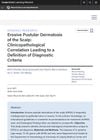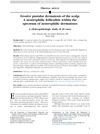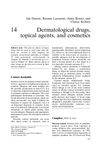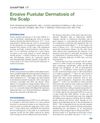Erosive Pustular Dermatosis of the Scalp: Clinicopathological Correlation Leading to a Definition of Diagnostic Criteria
June 2021
in “
PubMed
”
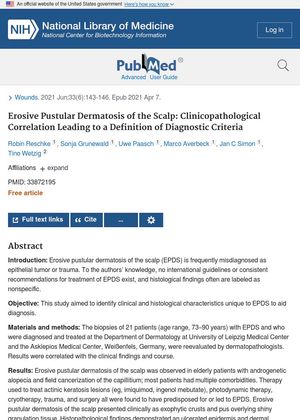
TLDR Chronic scalp lesions with crusts and pus indicate Erosive Pustular Dermatosis, which is confirmed by biopsy and effectively treated with strong topical steroids.
The study "Erosive Pustular Dermatosis of the Scalp: Clinicopathological Correlation Leading to a Definition of Diagnostic Criteria" reevaluated biopsies of 21 patients aged 73-90 years with Erosive Pustular Dermatosis of the Scalp (EPDS). EPDS was found in elderly patients with androgenetic alopecia and field cancerization of the capillitium, and was often triggered by therapies for actinic keratosis lesions, photodynamic therapy, cryotherapy, trauma, and surgery. Clinically, EPDS presented as exophytic crusts and pus overlying shiny granulation tissue. Histopathological findings showed an ulcerated epidermis and dermal infiltrates dominated by lymphocytes and plasma cells. Plasma cells were found in all 21 biopsies and were a common criterion for correct diagnosis. The erosive lesions healed well within weeks after therapy with topical steroids. The study concluded that chronic, poorly healing lesions with crusts and pus over shiny granulation tissue on the scalp are suggestive of EPDS, which should be confirmed by biopsy. Topical application of high-potency steroids showed great effectiveness in treating EPDS.
